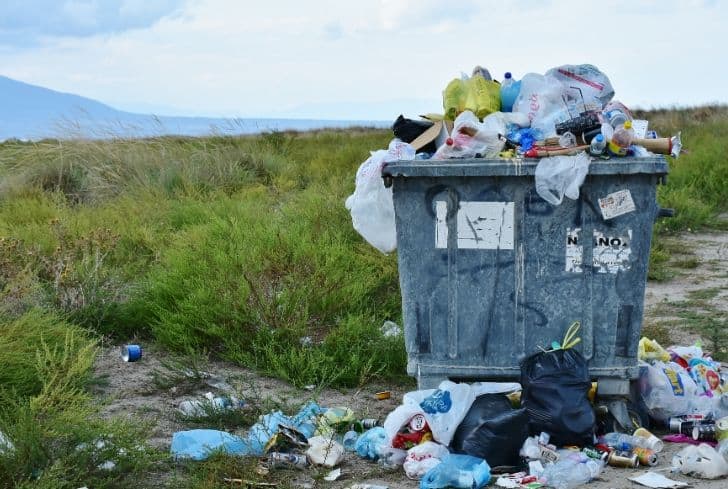Litter is any trash thrown away in small amounts, especially in places where it doesn’t belong.
Now, with time, litter heaps up, forcing municipalities to spend millions of dollars annually in cleanup costs.
But it’s not just about the costs — litter, generally, portrays a bad picture of an area, turning what was initially beautiful into an unsightly place.
The most frequently littered items include fast food packaging, cigarette butts, used drink bottles, chewing gum wrappers, broken electrical equipment parts, toys, broken glass, food scraps, or green waste.
In other words, litter includes any item not disposed of properly. While not many people fully understand the repercussions of littering, it’s a dangerous practice and should not be taken lightly because it impacts the environment in multiple ways.
Littering is a crime, but they are not enforcing the law. We need to educate the youths on why littering is bad and the effect litter has on neighbourhoods.
~ Johnnise Downs
To better understand littering, here is a list of its causes, problems, and possible solutions.
Various Causes of Littering
The consequences of littering are far-reaching, impacting wildlife, ecosystems, public health, and the overall aesthetic appeal of our surroundings. Addressing the causes of littering is essential for preserving the cleanliness and sustainability of our planet.
The following are the major causes of littering in our society.
1. Presence of Litter in an Area
Research has proven a correlation between the presence of litter in a given area and the intentional throwing of litter at that particular spot.
The research points out that when someone sees litter already accumulated somewhere, it gives him the impression that it’s the right place to discard items. In most cases, it’s either accidental or intentional.
2. Construction Projects
Some percentage of litter also comes from construction projects. The workers’ lunchtime waste and the uncontrolled generation of building waste are the culprits of the litter produced by construction projects.
Pieces of wood, metals, plastics, concrete debris, cardboard, and paper are some of the common waste materials generated.
3. Laziness and Carelessness
Laziness and carelessness have bred a culture of habitual littering. Typically, people have become too lazy and unwilling to throw away trash appropriately.
It is common to see people discard trash out of their kitchen windows or balconies, probably because they are too lazy to put it in the rightful places. Carelessness has also made people throw rubbish anywhere without even thinking about it.
4. The Belief That There is no Consequence For Littering
Since people perceive no consequence for their actions when they throw items anyhow and anywhere, it has created the “I don’t care attitude.”
Pedestrians getting rid of chewing gum wrappers and other waste on the roadways and streets or motorists throwing garbage from their cars reveals this attitude.
Most people believe others will pick it up or clean it up.
5. Lack of Trash Receptacles
Many passengers, pedestrians, and people living in urban areas have blamed rampant littering on the lack of public trash cans.
Some places have them, but they are not enough, while some of the existing ones are sometimes poorly managed, which leads to overloading of the containers. Besides, animal scavengers and blowing wind can dislodge the items and scatter them around.
6. Improper Environmental Education
Many people do not know that their various acts of littering negatively impact the environment. As a result, people continue to throw litter anywhere without considering the environmental consequences.
Smokers, for example, are unaware of the environmental impact of their aimlessly throwing cigarette butt. The case is similar for passengers, pedestrians, and people who aimlessly throw wrappers or other used items in remote or public areas.
7. Low Fines
The fines for littering in many countries are quite low; to some, fines are not provided. Since people do not expect to get fined, they usually stick to their littering behavior.
For example, it is common for people to throw their cigarette butts and not care about this behavior as they are never fined.
8. Pack Behavior
As per psychology, it is human nature to get affected by the people we spend time with, even unconsciously.
Thus, if we spend time with stubborn people, unwilling to change their behavior, immature, or lack awareness of their actions that adversely affect the environment or are selfish enough to care for the environment and litter quite frequently, we are also more likely to start littering.
Serious Problems With Littering
The consequences of littering emphasize the critical effects of this problem on the environment and the well-being of our planet and all its inhabitants.
They include;
1. Can Cause Physical Harm or Injury to People
Litter can contain objects that can harm or cause physical injury to people or animals, namely needles, blades, or broken glass.
Rowing cigarette butts in the forest can also spark fires, destroy nearby properties and homes, or even kill those trapped in the fire.
2. It Can Facilitate the Spread of Disease
Littering can encourage the spread of pest species and diseases. Trash can provide a breeding ground for diseases and pass them through animals that eat them.
If the trash collects water, it may also harbor mosquitoes known to spread the deadly malaria disease in tropical regions.
Toxic chemicals and disease-causing microorganisms in the trash may also contaminate water systems and spread water-borne diseases, which can negatively affect the health of animals and humans if unclean or untreated water is consumed.
3. Pollutes the Environment
Litter adversely affects the environment. Be it littering along the road, in parks, on the streets, or by the litter bins, toxic materials or chemicals in the litter can be blown or washed into rivers, forest lands, oceans, lakes, and creeks and eventually pollute the waterways, land, forest areas, soils or aquatic environments.
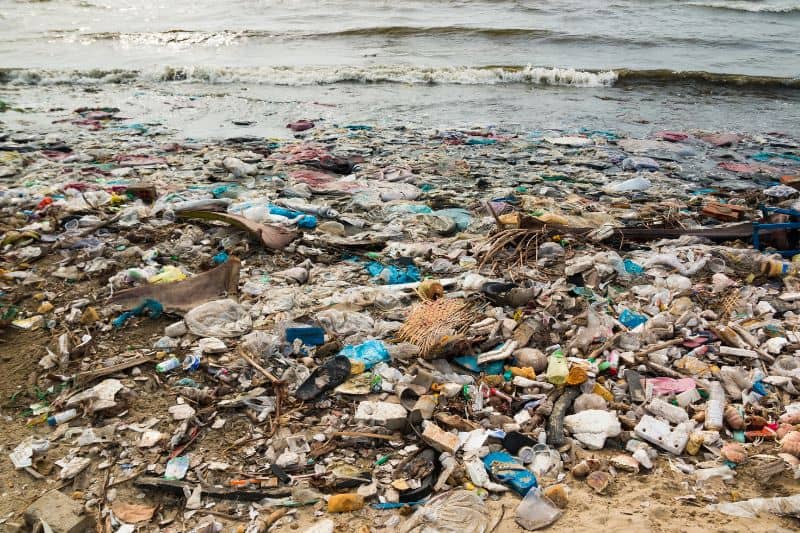
Cigarette butts, for instance, contain toxic substances like arsenic, a well-known carcinogen of the liver, skin, lungs, and other body organs that also contaminate soil and water. The Great Pacific garbage patch is another example connected to marine plastic pollution.
Litter can also reduce air quality due to the smell and toxic/chemical vapor emanating from the trash.
4. High Cleanup Costs
Millions of dollars are spent by municipalities annually on cleanup efforts to reduce littering. This makes littering a huge problem because the money that would otherwise be used in progressive development is partly directed to waste management programs.
Litter can also block stormwater drainage systems and cause urban flooding, which requires money for intervention and restoration.
5. It Affects and Can Kill Wildlife
Plastic litter is often mistaken for food by land and marine wildlife, such as herbivores, sea birds, turtles, and fish.
When consumed by the animals, litter reduces their stomach capacity since it can’t be digested. In the long term, it affects the animals’ eating habits, eventually killing them.

Several marine wildlife, including birds, whales, dolphins, and turtles, have been found dead with plastics and cigarettes in their stomachs. Some of the materials may also be poisonous or contain sharp objects, thereby damaging the animal’s vital organs or injuring them.
6. Affects Aesthetic Value and Local Tourism
Littered places look gross and depreciate the aesthetic value of the surrounding environments. Similarly, it affects local tourism by making city areas and roadsides look disgusting.
The public and tourists also avoid littered areas because of health issues and unattractiveness. It also causes visual pollution and affects people’s quality of life.
7. Increased Probability of Fires
People often underestimate the underlying dangers of their behavior that littering may also contribute to fires. They throw away their cigarettes wherever they stand and risk sparking wildfires in areas at high risk for wildfires because of dry wood.
They hardly believe that a cigarette could be enough to start a fire. Therefore, littering can increase the probability of wildfires.
8. Breeding Ground for Insects
Litter can serve as a breeding ground for insects or pests. If it is organic litter, it can be quite harmful as insects and other pests prefer to breed on organic substances.
But that’s not all — littering can also lead to an increase in the population of undesirable insects, which obviously isn’t very good for both human and crop health.
9. Soil Pollution
Soil pollution is among the adverse effects of littering. Litter consists of several materials like glass, metal, and organic stuff and can also contain hazardous materials.
One example is batteries. As batteries contain many harmful substances, they may severely pollute the soil if disposed of improperly into the litter.
The soil is likely to store harmful substances, contaminating groundwater since the harmful substances are washed through the soil during rainfall.
10. Water Pollution
Littering can contribute to water pollution in several ways. When people dispose of their garbage directly into the water, rivers, and lakes can be polluted.
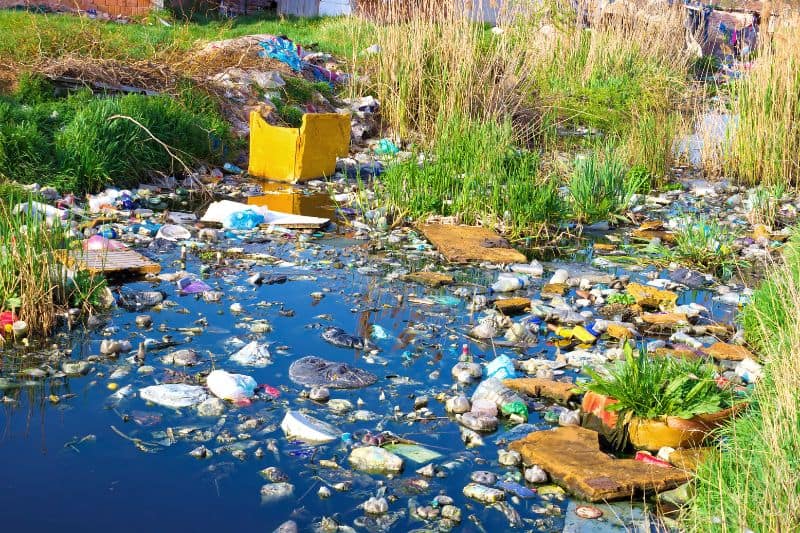
Additionally, water pollution includes the contamination of groundwater when garbage is washed into it due to natural rainfall. This garbage is likely to end up in our oceans eventually.
11. Air Pollution
People often burn litter to get rid of it. However, in the combustion process, the harmful substances contained in the litter mix with the air and lead to air pollution.
This problem becomes severe, especially when it comes to the burning of plastic, which leads to the emission of many toxic gases and particulate matter that can negatively affect the human respiratory system.
Possible Solutions to Littering To Save Our Environment
Addressing the problem of littering requires proactive solutions that promote responsible behavior and effective waste management. Developing sustainable practices is key to finding long-term solutions that ensure cleaner and healthier surroundings for present and future generations.
Below is a discussion of these solutions to littering that we can apply to save our environment.
1. Litter Laws
Strict litter laws ensure no litter is discarded, thrown, or dropped in private or public areas. Such laws work towards prohibiting illegal dumping and littering.
The law must also clearly stipulate that dumping is a serious offense, punishable by serving a jail term and fines.
Several local authorities globally have considerably addressed the littering problem by instituting legislation punishing perpetrators with fines, imprisonment, and community service.
2. More Controlling Instances
Littering is mostly not controlled and fined appropriately because there is a lack of controlling instances or people who can control littering.
People know they can get away with littering, and nobody is ready to fine them. However, they can be stopped from littering by increasing the number of people engaged in controlling and fining litter.
3. Anti-litter Campaigns
Community programs and groups should be created with friends and neighbors for neighborhood cleanups with the sole aim of running anti-litter campaigns to raise awareness.
“Keep the environment tidy” programs and community cleanup events can be fun and sufficiently valuable in spreading the message.
The campaigns can also be incorporated into bulletin boards, social media platforms, and newsletters to spread the message widely.
Campaigns speak a lot and provide relevant knowledge about the environmental costs of littering, eventually addressing some of the major problems.
In supporting this initiative, more than half of smokers say that if they know how their behavior impacts the environment, they will strive to correct it.
4. Stop Littering Signs
Putting up signs is a very creative way of putting a stop to littering. The signs should be placed in highly littered areas and those prone to littering, such as the streets near public transport stations.
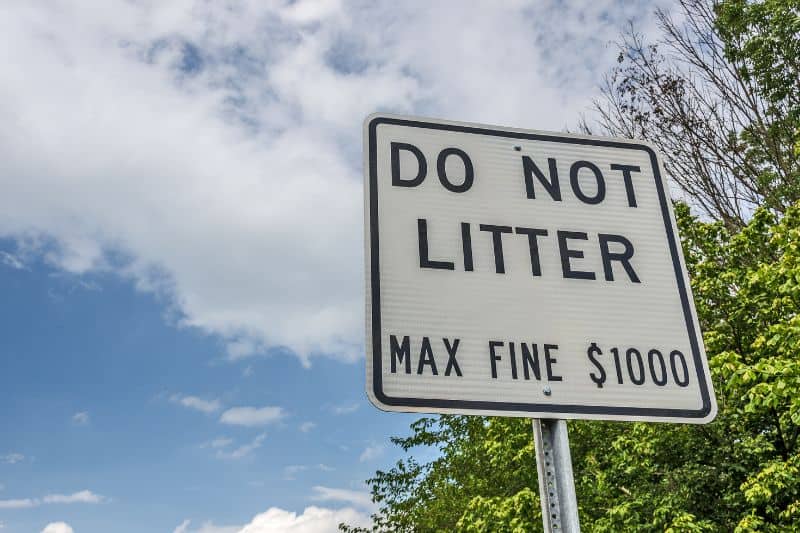
Routes used daily by pedestrians and commuters also deserve “stop littering signs” to constantly remind people that littering is a bad thing and should thus be avoided.
5. Putting up Litter Bins
Proper measures must be taken by the relevant local authorities to ensure more garbage bins are installed in various areas for effective garbage disposal.
Putting up enough garbage bins in town centers, walking routes, public areas, near bus stops, and fast-food restaurants offers convenience in the disposal and collection of litter.
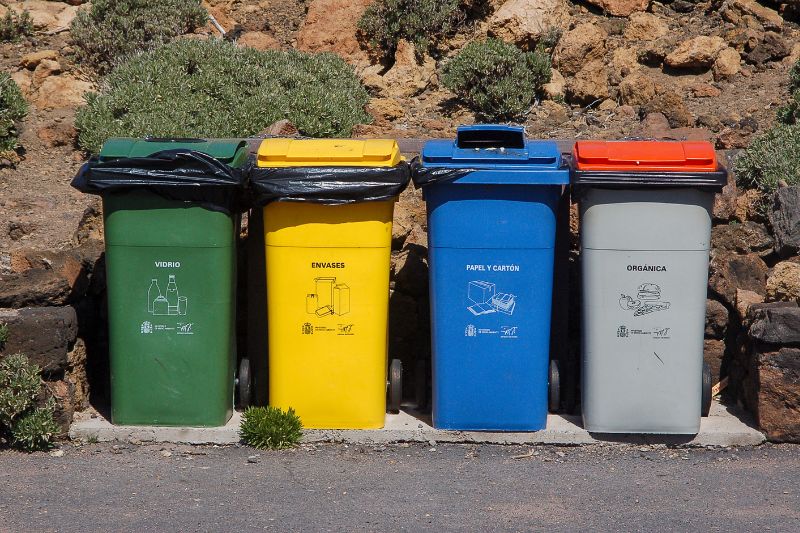
Litter bins also help ease the recycling and reuse initiatives as the local authorities and garbage collectors are given enough time to sort the waste.
Moreover, the bins must be emptied regularly to avoid additional problems due to overfilling.
6. Education
Education is crucial to mitigate the littering issue. People need to know how their actions in their daily lives affect the environment.
We also have to make people understand that it is quite easy to avoid littering and thus contribute to protecting the environment.
7. Involve Children and Youth
This education should begin in schools because children and youth play an important role in shaping and keeping a nation clean and beautiful.
Children are good learners and adjust their behavior more easily than most adults.
Moreover, children may convince their parents to avoid littering. Additionally, when they grow up to be aware of the littering problem, they may be motivated to take measures to mitigate it.
8. Recycling of Waste
Recycling can prevent resource waste, and it is possible to reuse many things thrown in the garbage. The local community and the environment can benefit from recycling materials instead of littering.

It saves natural resources, landfill space, energy, clean air, and water and conserves the environment.
9. Carry a Litter Bag
Keep a litter bag in your car, bring it with you whenever you are out, and throw your trash in your bag until you find a garbage receptacle.
This action will not only keep your car clean and organized but also keep the streets clean.
Why Do People Litter?
One of the main reasons why people litter is because they are lazy, careless, and irresponsible. The lack of accountability and responsibility for keeping the planet a clean and habitable place allows them to carry out actions that could destroy it.
Due to ignorance and lack of knowledge about what littering might do to animals, plants, humans, and the whole planet, some people keep doing this bad activity.
Another reason people litter is the lack of trash cans or bins around a certain area. This is still connected to the sense of responsibility and caring as we could always keep our trash in our pockets or bags until we find a trash bin.
However, putting trash cans or bins in public areas would help reduce littering by a mile.
If irresponsible and careless people were punished or fined severely for littering, that could probably stop them from doing the bad activity. Due to the lack of strict law enforcement on littering, people keep doing it as if it is not a bad thing, which makes it a reason why people litter.
Furthermore, people usually litter in areas that are already filled with trash. People litter in areas covered in garbage, thinking that the area is a big trash bin. Bearing this in mind, keeping our areas clean could also stop littering.
Lastly, people litter due to an unwillingness to change their bad behavior. Many people are stubborn and don’t like listening to knowledgeable people about certain actions that could help the planet.
Even if some experts show them the facts and try to make them understand completely, some people do not want to listen and keep doing what they think is fine and right.
This is a painful reality that the people who care about the planet face every day.
Why Should We Stop Littering?
Some of the reasons we should stop littering are that it causes air, land, and water pollution; it kills animals and plants; and it is a means by which diseases keep spreading.
Littering causes air, land, and water pollution as the trash that people randomly throw away in the environment is full of chemicals and microparticles that are not natural in nature.
These chemicals are penetrating the soil and water, which could cause the destruction of nature and later on affect animals, plants, and humans.
Other than the affected land and water, littering also pollutes the air. The toxic emissions from burning litter could contribute greatly to ozone depletion and global warming.
Furthermore, it could cause respiratory problems in both animals and humans. If that’s not enough reason to stop littering, there are more.
In connection to the pollution caused by littering, the longevity of our environment is affected by this bad activity, which would lead to the killing of wildlife. Due to people’s litter, animals, especially the aquatic ones, eat the trash, which could kill them.
Aside from that, the water and air being filled with chemicals could cause many health problems for animals and suddenly lead to their deaths. Due to irresponsible littering, wildlife is becoming at stake.
Lastly, we should stop littering because it is a means for diseases to keep on spreading. Areas filled with litter allow bacteria, viruses, and parasites to reproduce.
As they continuously grow in number, it is easier to get in contact with the germs after picking them up or touching them. Other than that, insects from the area could transmit the bacteria to humans.
There are lots of reasons why we should stop littering and keep our planet clean and healthy.
Always be responsible and careful with your actions so that we can all live healthily and peacefully.
